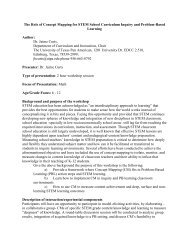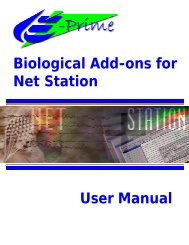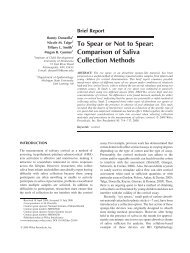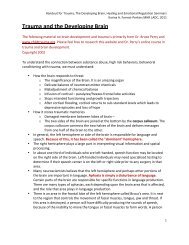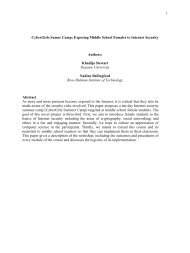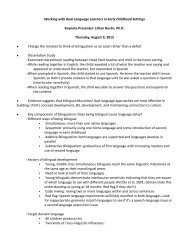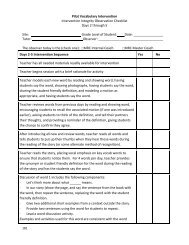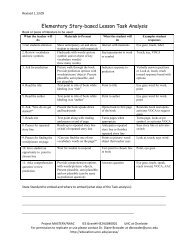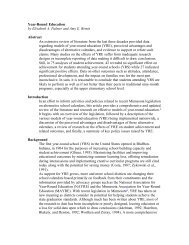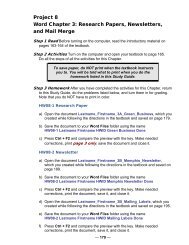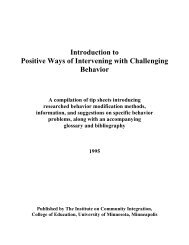Net Station Waveform Tools - College of Education & Human ...
Net Station Waveform Tools - College of Education & Human ...
Net Station Waveform Tools - College of Education & Human ...
You also want an ePaper? Increase the reach of your titles
YUMPU automatically turns print PDFs into web optimized ePapers that Google loves.
Four Cells<br />
To expand on the example given in “Two Cells” on page 185, let us have the subjects<br />
indicate not only if a word has a positive (“good”) or a negative (“bad”) connotation,<br />
but also whether it applies (“yes”) or does not apply (“no”) to themselves. This would<br />
result in four complex categories, each consisting <strong>of</strong> two traits.<br />
With our word experiment, we would enter “good-no” and “good-yes” into<br />
column a-c, and “bad-no” and “bad-yes” into column b-d, so that the columns and<br />
rows are crossed (“good” and “bad” in each column, and “no” and “yes” in each<br />
row):<br />
<strong>Net</strong> <strong>Station</strong> <strong>Waveform</strong> <strong>Tools</strong> Technical Manual S-MAN-200-WFTR-001 • December 21, 2006<br />
(no)<br />
(yes)<br />
The tool compares the relationships between the columns, the rows, and the<br />
interaction between the columns and rows (the interaction qualifies the main effects).<br />
The resulting three t-tests are:<br />
(good) (bad)<br />
a b<br />
c d<br />
• a t-test <strong>of</strong> the mean <strong>of</strong> cells a and c compared with the mean <strong>of</strong> cells b and d<br />
(a Column t-test)<br />
• a test <strong>of</strong> the mean <strong>of</strong> cells a and b compared with the mean <strong>of</strong> cells c and d<br />
(a Row t-test)<br />
• a t-test <strong>of</strong> the difference between cells a and b compared with the difference<br />
between cells c and d (an Interaction t-test)<br />
Because the cells contain compound categories (such as “bad-no,” rather than simply<br />
“bad”), the interaction allows us to separate the traits in the categories. This allows us<br />
to show how a main effect (for example, bad words having a greater medial frontal<br />
negativity) is qualified by the interaction (a greater response <strong>of</strong> “yes” to bad words).<br />
20: T-test<br />
187




